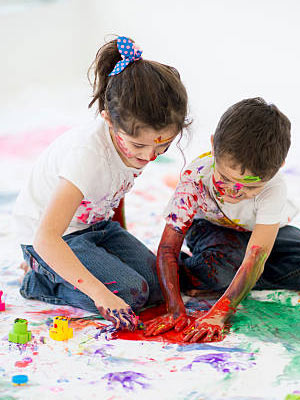- +91 7680015156
- advaithacdc@gmail.com
Art therapy
- Home
- Services
- Art therapy
Art therapy is a unique and powerful tool that has gained recognition for its positive impact on various aspects of child development. Beyond the realms of traditional counseling and play, art therapy provides children with a creative outlet to express themselves, fostering emotional, cognitive, and social growth. In this article, we delve into the world of art therapy, exploring its definition, benefits, and how it plays a crucial role in shaping the developmental journey of children.
What is Art Therapy?
Art therapy is a therapeutic technique that uses the creative process of making art to enhance psychological well-being and foster self-expression. For children, who may find it challenging to articulate their thoughts and emotions verbally, engaging in artistic activities provides a non-verbal medium for communication. Through drawing, painting, sculpting, and other forms of artistic expression, children can convey their inner worlds in a safe and supportive environment.

The Benefits of Art Therapy for Child Development:
Emotional Expression
Art therapy serves as a powerful outlet for children to express their emotions freely. By creating visual representations of their feelings, children can explore and process complex emotions such as joy, sadness, anger, and fear.
Cognitive Development
Engaging in artistic activities stimulates cognitive functions, including problem-solving skills, critical thinking, and spatial awareness. As children experiment with different materials and techniques, they enhance their cognitive abilities in a hands-on and enjoyable way.
Social Skills Enhancement
Group art therapy sessions provide a unique setting for children to develop and refine their social skills. Sharing materials, collaborating on projects, and discussing their creations with peers encourage teamwork and communication.
Self-Esteem Boost
Successfully completing an art project instills a sense of accomplishment in children, contributing to a positive self-image. This boost in self-esteem can have a lasting impact on their overall emotional well-being.
Stress Reduction
Art therapy has been shown to reduce stress and anxiety in children. Engaging in creative activities allows them to focus on the present moment, promoting mindfulness and relaxation.
How Art Therapy Fits into Child Development
Early Childhood
In the early years, art therapy can help children develop fine motor skills and hand-eye coordination. Simple activities like finger painting or molding clay lay the foundation for future artistic exploration.
Middle Childhood
As children grow, art therapy becomes a valuable tool for self-discovery and identity formation. Exploring different artistic mediums allows them to express their evolving personalities and interests.
Adolescence
During adolescence, art therapy can be particularly beneficial in navigating the challenges of identity, self-expression, and peer relationships. It provides a safe space for teens to explore their emotions and cope with the complexities of adolescence.
Art therapy emerges as a beacon of creativity and healing in the realm of child development. By embracing the power of artistic expression, children can embark on a journey of self-discovery, emotional resilience, and social growth. As caregivers and educators, recognizing the significance of art therapy in a child's developmental toolkit can pave the way for a brighter and more expressive future.

